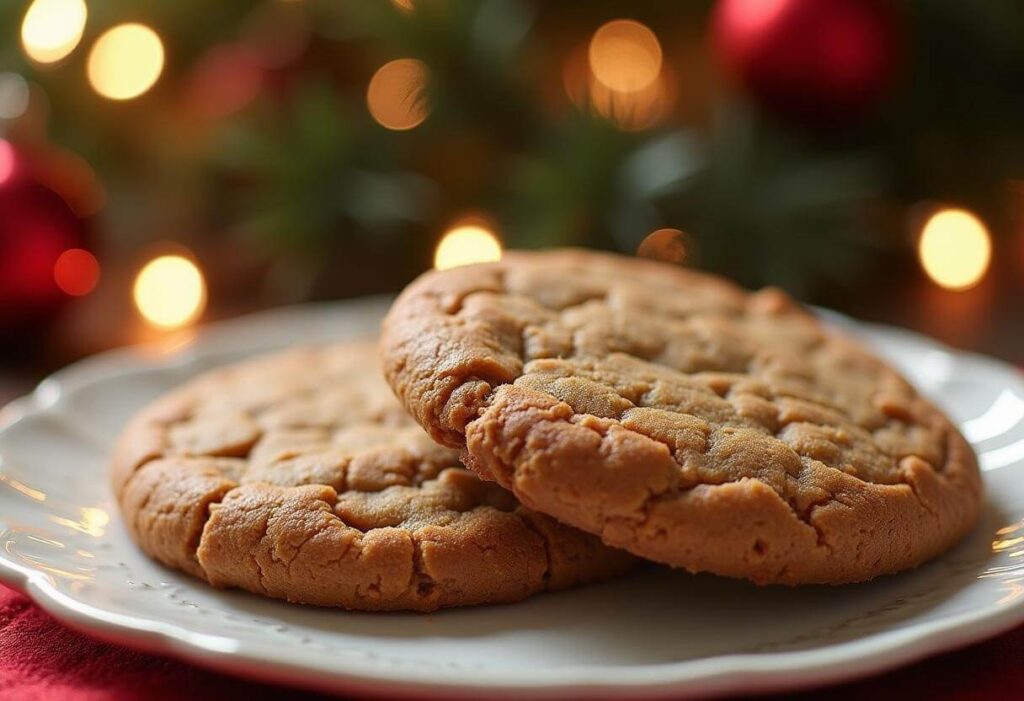Introduction: The Great Debate on Gingerbread Cookies
Gingerbread cookies are a quintessential holiday treat, beloved for their warm spices and festive appeal. But one question often sparks debate among bakers and cookie enthusiasts alike: should gingerbread cookies be hard or soft? The answer isn’t straightforward, as preferences for texture vary widely. Some enjoy a crunchy cookie that pairs well with hot cocoa, while others favor a tender, chewy bite that melts in the mouth.
The versatility of gingerbread cookies allows for endless variations, from thick, cake-like cookies to thin, crisp creations. Several factors influence the texture, starting with the recipe. Ingredients like molasses, golden syrup, and butter can determine whether cookies lean toward soft or hard. Baking time and temperature also play a significant role, as slightly underbaked cookies remain softer, while extended baking yields a firmer result. Finally, storage methods—such as refrigeration or airtight containers—can either preserve or transform the texture over time.
Whether you’re baking for a gingerbread house or creating cookies for decoration and snacking, understanding these factors can help you achieve the perfect texture. In this guide, we’ll explore tips, tricks, and recipes to cater to your preferences, so you can enjoy gingerbread cookies exactly how you like them.
1. Understanding Gingerbread Cookie Textures
1.1 What Makes Gingerbread Cookies Hard or Soft?
The texture of gingerbread cookies—whether hard or soft—is primarily determined by the ingredients and baking process. Key components like molasses, golden syrup, and butter play a significant role. For instance, molasses and golden syrup are both humectants, meaning they help retain moisture in baked goods. Using more of these ingredients in your recipe results in soft gingerbread cookies with golden syrup being particularly effective in keeping cookies tender.
Butter, on the other hand, contributes to the richness and tenderness of cookies. A higher fat content typically results in a softer texture, while recipes with less fat or that rely on shortening may yield firmer cookies. The type of flour used also matters, as more gluten development creates a chewier texture.

Baking time and temperature are equally critical. For softer cookies, bake them at a lower temperature for a shorter time to prevent excess moisture loss. In contrast, baking at a higher temperature or for an extended period results in crispier edges and a firm texture overall. Striking the right balance in these variables allows you to customize the texture to your liking.
1.2 Are Gingerbread Cookies Supposed to Be Crunchy?
This question doesn’t have a definitive answer—it depends on personal preference and cultural tradition. In many European countries, gingerbread cookies are traditionally crunchy. For example, German lebkuchen and Scandinavian pepparkakor are known for their crisp texture and spiced flavor, designed to last for weeks when stored properly.
However, in other regions, particularly the United States, soft gingerbread cookies are more popular, often adorned with icing or enjoyed fresh from the oven. The purpose of the cookies can also influence texture. Gingerbread meant for building houses is typically firmer, while cookies for eating are softer and chewier.
Ultimately, there’s no right or wrong texture—just the one that suits your taste and occasion.
2. Recipe Variations for Gingerbread Cookies
2.1 Classic Gingerbread Cookie Recipe
A traditional gingerbread cookie recipe strikes a perfect balance between soft and crisp. These cookies are lightly spiced, subtly sweet, and easy to roll out for cutting into festive shapes.

Ingredients:
- 3 cups all-purpose flour
- 1/2 cup molasses
- 1/2 cup unsalted butter, softened
- 1/2 cup brown sugar
- 1 large egg
- 1 teaspoon baking soda
- 1 tablespoon ground ginger
- 1 teaspoon cinnamon
- 1/4 teaspoon ground cloves
- 1/4 teaspoon salt
Instructions:
- Cream butter and sugar until fluffy. Add the egg and molasses, mixing well.
- Combine dry ingredients in a separate bowl. Gradually add to the wet mixture until dough forms.
- Chill dough for 1 hour, then roll out and cut into shapes.
- Bake at 350°F (175°C) for 8–10 minutes for a slightly soft texture.
These cookies are perfect for decorating or enjoying plain, with a satisfying balance of chew and snap.
2.2 Best Soft Gingerbread Cookies Recipe
For those who prefer soft gingerbread cookies, a few recipe tweaks can ensure a tender, melt-in-your-mouth texture.
Tips for Softness:
- Increase molasses or golden syrup for added moisture.
- Use more brown sugar, which retains moisture better than white sugar.
- Bake at 325°F (165°C) for a shorter time, removing cookies when edges are set but centers are soft.
A highly rated best soft gingerbread cookies recipe includes these adjustments and uses sour cream or yogurt for additional tenderness. The result is a cookie that stays soft even after a few days of storage.
2.3 Spicy Gingerbread Cookies for Extra Flavor
If you love bold flavors, try spicy gingerbread cookies. Amp up the ginger and cinnamon, and add a pinch of cayenne or black pepper for heat. Cardamom or allspice can add a unique twist. These cookies pair wonderfully with coffee or tea.
Storage Tip: To maintain the cookies’ texture and flavor, store them in an airtight container with a slice of bread to retain moisture or add a moisture absorber if you prefer crispness.
Experiment with these recipes to create your perfect gingerbread cookie!
3. Troubleshooting Gingerbread Cookie Texture
3.1 Why Did My Gingerbread Cookies Come Out Hard?
One of the most common questions from bakers is: Why did my gingerbread cookies come out hard? Several factors could contribute to this issue, but most can be easily corrected.
Common Mistakes:
- Overbaking: Baking cookies too long dries them out, resulting in a firm, crunchy texture. Even a minute or two beyond the ideal time can make a difference.
- Too Much Flour: Over-measuring flour leads to a dense dough, producing hard cookies. This often happens when flour is packed into the measuring cup instead of spooned and leveled.
- Low Moisture Ingredients: Skipping moistening agents like molasses or substituting butter with less rich fats can result in a drier dough.
Solutions:
- Monitor Baking Time: Remove cookies from the oven when edges are firm but centers remain slightly soft. Remember, cookies continue to cook slightly after being taken out of the oven.
- Measure Accurately: Use a kitchen scale for precise measurements or spoon flour into the measuring cup before leveling.
- Add Moisture: Include enough molasses, golden syrup, or brown sugar for a softer texture. If the dough feels dry, add a tablespoon of milk or cream.
By addressing these factors, you can ensure your cookies remain soft and tender.
3.2 How Can You Tell When Gingerbread Cookies Are Done?
Knowing when to pull gingerbread cookies from the oven is key to achieving your preferred texture. For soft gingerbread cookies, timing is especially critical.
Visual Signs:
- The edges should be slightly firm but not browned.
- The center may appear set but will still be soft to the touch.
Tactile Signs:
- Gently press the center of a cookie; it should spring back slightly without leaving a deep indent.
- If the cookies feel overly firm while still in the oven, they’ve likely been overbaked.
For crisper cookies, bake until the edges are golden brown, and the cookies feel firm when tapped. By closely observing these signs, you can master the timing for perfectly textured gingerbread cookies every time.
4. Storing and Preserving Gingerbread Cookie Texture
4.1 Should Gingerbread Cookies Be Hard or Soft in the Fridge?
A common question among bakers is: Should gingerbread cookies be hard or soft in the fridge? The answer depends on how refrigeration impacts their texture. Typically, refrigeration causes cookies to harden because the cold environment removes moisture from baked goods. This effect is more noticeable in soft gingerbread cookies, which can lose their tender texture over time.
To maintain your cookies’ softness or crispness:
- For Soft Cookies: Store them in an airtight container with a slice of bread or an apple slice. The added moisture helps prevent cookies from drying out.
- For Crisp Cookies: Use a container with minimal airflow to keep them crunchy. Avoid storing crisp and soft cookies together, as moisture from the softer ones can make the others lose their snap.
Refrigeration is generally unnecessary unless you’re extending shelf life for more than a week or protecting cookies with perishable fillings or decorations.
4.2 Long-Term Storage Tips
For long-term storage, freezing is an excellent way to preserve gingerbread cookies while maintaining their texture and flavor.
Freezing Instructions:
- Allow cookies to cool completely to prevent condensation.
- Layer cookies between sheets of parchment paper in an airtight container or freezer bag.
- Freeze for up to 3 months.
Refreshing Texture After Storage:
- Soft Cookies: Allow frozen cookies to thaw at room temperature. To restore softness, briefly microwave them for 10–15 seconds or place them in a warm oven for a minute.
- Crisp Cookies: Re-crisp cookies by baking them at 300°F (150°C) for 5–7 minutes.
Proper storage techniques ensure your gingerbread cookies remain as delicious as the day they were baked, whether you prefer them soft or crunchy.
5. Enhancing Gingerbread Cookies with Icing
5.1 Soft Gingerbread Cookies with Icing
Adding icing to soft gingerbread cookies not only enhances their appearance but also complements their texture. The sweetness of the icing balances the warm spices of the cookie, creating a delightful contrast.
Tips for Icing Soft Gingerbread Cookies:
- Use a thinner icing, such as a glaze made from powdered sugar, milk, and a touch of vanilla, to avoid overwhelming the soft texture.
- Apply the icing once the cookies are completely cool to prevent it from melting or soaking into the cookie.
- To keep cookies soft, avoid hard-setting royal icing. Instead, opt for buttercream or a semi-soft glaze that stays slightly pliable.
When applying icing, use a piping bag for precision or a spoon for a rustic look. Let the icing set at room temperature before storing the cookies to ensure they don’t stick together.
5.2 Decorative Techniques
Decorating gingerbread cookies can be as simple or intricate as you like, making them perfect for festive occasions. Whether your cookies are soft or crisp, here are some easy ideas:
- Outline and Flooding: Use contrasting icing colors to outline cookie shapes, then flood the center with a thinner icing for a polished finish.
- Sprinkles and Edible Decorations: While the icing is still wet, add sprinkles, edible glitter, or candy for extra flair.
- Thematic Designs: For holidays, consider decorating with snowflakes, Christmas trees, or reindeer motifs. During other seasons, hearts or flowers can add a cheerful touch.

For Crisp Cookies: Use detailed piping designs since firmer cookies hold intricate patterns better.
For Soft Cookies: Opt for simpler designs to avoid applying too much pressure that could break the cookie.
Decorated gingerbread cookies not only look beautiful but also add a personalized touch to any celebration.
6. Frequently Asked Questions (FAQ)
Are gingerbread cookies supposed to be crunchy?
Not necessarily—it depends on personal preference and tradition. In many European cultures, gingerbread cookies, such as German lebkuchen, are traditionally crunchy. However, in the United States, soft gingerbread cookies are more popular. The purpose of the cookies (e.g., decoration vs. eating) often influences the texture.
Why did my gingerbread cookies come out hard?
Hard gingerbread cookies are often the result of overbaking or using too much flour. Overbaking dries out the cookies, making them overly firm. Similarly, excessive flour can create a dense dough. To prevent this, monitor baking times closely, measure ingredients accurately, and incorporate moistening agents like molasses or golden syrup.
Is gingerbread hard or soft?
Gingerbread can be either hard or soft, depending on the recipe and baking method. For softer cookies, use ingredients like molasses and bake for a shorter time. Hard gingerbread cookies are often baked longer and used for building gingerbread houses or for decorations.
How can you tell when gingerbread cookies are done?
Gingerbread cookies are done when the edges are firm, but the center is still slightly soft to the touch. For soft cookies, the center should appear just set. For crunchy cookies, bake until the edges turn golden brown and the cookie feels firm when lightly tapped.
These answers cover common questions about gingerbread cookie texture, helping you bake cookies exactly as you like them.
Conclusion: Finding Your Perfect Gingerbread Cookie Texture
When it comes to baking, one of the most enjoyable aspects of gingerbread cookies is their versatility. Whether you prefer them crunchy or chewy, the answer to “Should gingerbread cookies be hard or soft?” ultimately depends on personal preference. Some love the satisfying snap of a crisp cookie, perfect for decorating or dipping in warm drinks. Others crave the tender, moist bite of a soft gingerbread cookie, infused with warm spices and perfect for eating plain or with icing.
Achieving your ideal texture is a combination of choosing the right recipe and mastering techniques like ingredient ratios, baking time, and storage methods. Using molasses and golden syrup can keep cookies soft, while a slightly longer bake at a higher temperature will give you a firmer cookie. Similarly, storage in airtight containers can preserve the texture you worked hard to create.
The beauty of baking is in experimentation. Try different recipes, adjust baking times, and play with spices to make each batch your own. Share your tips and creations with others to inspire their gingerbread cookie adventures. Baking is as much about community as it is about creating something delicious.
So, the next time you find yourself debating whether gingerbread cookies should be hard or soft, remember—there’s no wrong answer. It’s all about what makes your holiday season sweeter.

